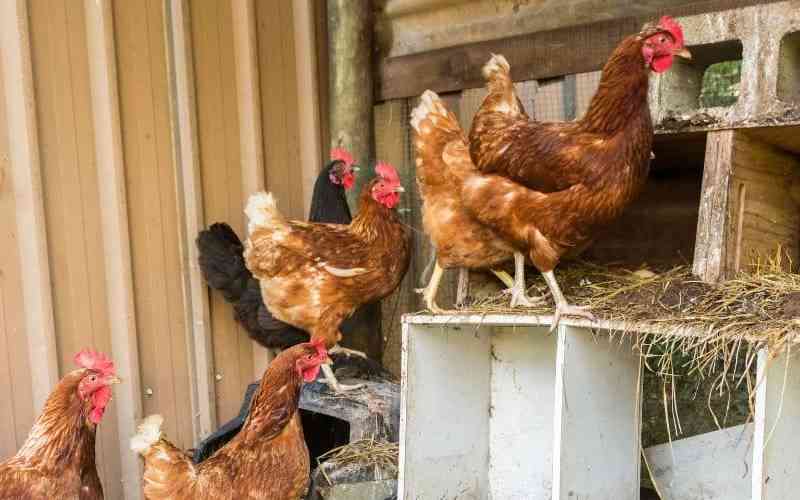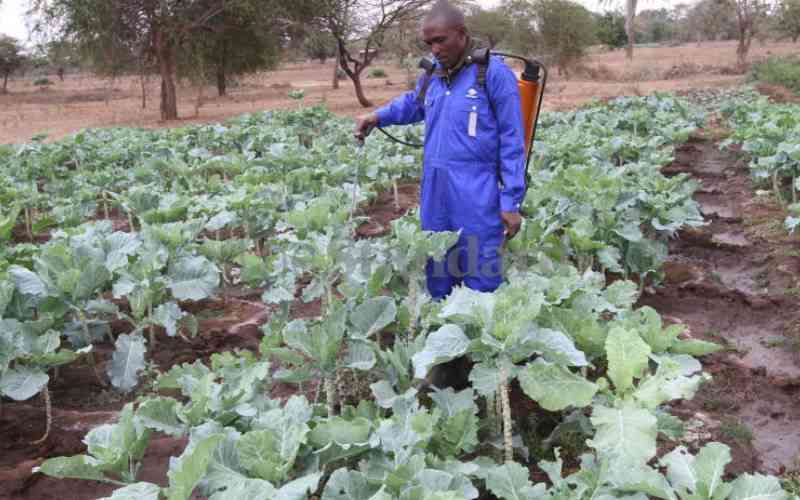The use of inorganic pesticides gained prominence in the nineteenth century. People were initially using chemicals derived from natural sources. Through the 1940s, many pesticidal compounds were synthesised, among them DDT, 2, 4-D. Although very useful for their time, these old generation pesticides had some disadvantages, such as application at high rates, lack of selectivity, crop injury, etc. Pesticide science has made tremendous strides over the last century, yet, even with these advancements, questions still surround the pesticide market. Are they necessary and are they causing more harm than good? We talked to CropLife Africa Middle East boss Stella Simiyu to shed more light on the pesticide question.
What are pesticides and why are they needed?
The Pest Control Products Act defines a pesticide(also called pest control products) as any product, device, organisms, or other substance used as a means for directly or indirectly controlling, preventing, destroying, attracting or repelling any pest. Pesticides can, therefore, be chemical, or biological (living organisms such as bacteria, viruses, fungi, insects or extracts of living organisms including plants) or physical devices (such as traps).
Science and technology have continued to record tremendous advances in the field of agriculture. But even as man lives in some of the most technologically advanced times, a combination of factors, particularly in the developing world have conspired to make it almost impossible for populations in these countries to feed themselves. These include climate change, land fragmentation, poverty and poor policies among others. The problem of pests and diseases still persists, and some of these have evolved with the changing global climate and continue to drastically affect global food production.
To manage pests, pesticides continue to be an important tool to this age-old problem.
How are pesticides regulated?
Pesticides are regulated by national governments to ensure there are no unacceptable risks to human health and the environment from their intended uses at all phases of their life cycle – from research and development to labeling, transportation, use, and disposal. Per local registration requirements, pest control product labels are customised for language, use, and geography. When it comes to evaluation, procedures adopted by Organisation for Economic Co-operation and Development countries such as the United States, Canada, European Union, Australia or Japan among others are an important source of reference. Also, FAO provides the PesticideRegistration Toolkit which is a decision support system for pesticide registrars in developing countries. In Kenya, importation, exportation, manufacture distribution, transportation, sale, disposal and safe use of pest control products is regulated under the Pest Control Products Act. The Pest Control Products Board evaluates and considers for registration in Kenya all pest control products used or sold into or out of Kenya.
How can risks associated with use of pest control products be managed?
When using a product, one has to check first that it is authorised in the country and follow the instructions indicated on the label. Appropriate personal protective equipment (PPE), should be used as recommended on the specific product label. Equipment used in the application of pesticides should be properly maintained (washed after used, repair any leakages etc) and calibrated. It is also vital to use the right products at the right time. These measures ensure safe and responsible use. Proper use of pest control products is the responsibility of all. There are many companies that offer pest control management trainings to farmers in different parts of the country.
Should we worry about the safety of the foods we eat and that of the environment?
Governments and farmers around the world help ensure the safety of food crops. This includes regulating products used in safeguarding crops against damage by pests and ensuring their responsible use respectively. Traces of pesticides that can remain on food crops at harvest time are called residues. They are also strictly regulated through the setting of Maximum Residue Limits (MRLs) under Codex Alimentarius. Maximum Residue Limits are a trading standard and a measure of the highest level of a pesticide residue that is legally tolerated in or on food or feed when pesticides are applied correctly. MRLs are set well below levels of human health concern to ascertain that foods produced with pesticides are suitable for consumption. MRLs, when respected ensure the safety and quality of the foods.
In an era where organic farming is hailed as the next big thing, is there a need for pesticides?
Yes of course. Organic agriculture is not new. History has shown that no single technology can be a silver bullet against pests. If left uncontrolled, pests would significantly reduce the quantity and quality of food production. In fact, global crop losses could double to 80 per cent without effective integrated pest management (IPM) strategies, including the use of pesticides. In developing economies such as Kenya, the impact of these losses on food security and farmer livelihoods can be particularly severe, as recently witnessed during the fall armyworm epidemic on maize.
Support for farmers in low-income countries to protect their crops through the use of a range of tools and strategies should be encouraged. For example, farmers might be able to prevent pests through crop rotation or effective soil preparation. When the pest arrives, it might be reduced through the introduction of beneficial insects or the application of natural products. But when the pest population reaches a certain threshold, farmers also need to access chemical products to ensure a healthy harvest. Some pests and diseases can impact crops so quickly, particularly in tropical conditions, that biological and/or chemical intervention might be considered preventively ahead of visible crop damage. Potato late blight is such a disease that provides farmers with a very limited time window to react when the crop is affected. In order to have affordable food, pest control must also be economical. Few options are as economical as pesticides when it comes to dealing with stubborn pests and diseases.
Nevertheless, sustainable pest management will be achieved by careful integration of all measures available to the farmer (the “pest control tool kit”). This includes cultural methods (e.g. ploughing), biological control (e.g. using so-called “natural enemies of pests”), physical methods (e.g. traps) and choice of crop varieties that are resistant to pests. This is whatis called “integrated pest management”, or IPM. Advice on IPM may be obtained from experts such as agricultural extension agents, company agronomists, research institutions, etc.
Stay informed. Subscribe to our newsletter
 The Standard Group Plc is a
multi-media organization with investments in media platforms spanning newspaper
print operations, television, radio broadcasting, digital and online services. The
Standard Group is recognized as a leading multi-media house in Kenya with a key
influence in matters of national and international interest.
The Standard Group Plc is a
multi-media organization with investments in media platforms spanning newspaper
print operations, television, radio broadcasting, digital and online services. The
Standard Group is recognized as a leading multi-media house in Kenya with a key
influence in matters of national and international interest.
 The Standard Group Plc is a
multi-media organization with investments in media platforms spanning newspaper
print operations, television, radio broadcasting, digital and online services. The
Standard Group is recognized as a leading multi-media house in Kenya with a key
influence in matters of national and international interest.
The Standard Group Plc is a
multi-media organization with investments in media platforms spanning newspaper
print operations, television, radio broadcasting, digital and online services. The
Standard Group is recognized as a leading multi-media house in Kenya with a key
influence in matters of national and international interest.









